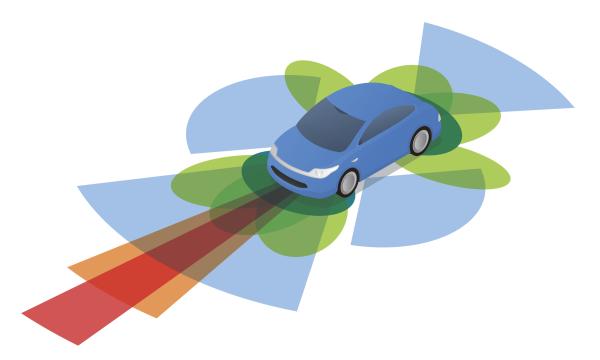
In today's rapidly evolving automotive landscape, Advanced Driver Assistance Systems (ADAS) have become a standard feature in many vehicles. These systems, which include technologies such as adaptive cruise control, lane departure warning, and automatic emergency braking, play a critical role in enhancing driver safety and comfort. However, what many drivers may not realize is that the proper functioning of ADAS heavily relies on accurate calibration. In this article, we will explore the significance of ADAS calibration and its impact on road safety.
ADAS Calibration: The Basics
ADAS calibration refers to the process of configuring and aligning the sensors, cameras, radar, and other components that make up an ADAS system. These components are responsible for collecting data and providing information to the vehicle's onboard computer, which in turn makes real-time decisions to assist the driver in various ways. Calibration ensures that the data collected is accurate, and the ADAS system functions as intended.
Types of ADAS Systems
ADAS systems come in various forms, ranging from simple systems like lane-keeping assistance to more complex ones like autonomous emergency braking. Each system relies on a combination of sensors and cameras to gather data and respond to potential hazards. These systems include:
1. Adaptive Cruise Control (ACC): Maintains a safe following distance by automatically adjusting the vehicle's speed.
2. Lane Departure Warning System (LDWS): Alerts the driver when the vehicle unintentionally drifts out of its lane.
3. Automatic Emergency Braking (AEB): Applies the brakes if the system detects an impending collision, reducing the severity or preventing the accident.
4. Blind Spot Monitoring (BSM): Warns the driver of vehicles in the blind spots to prevent lane-change collisions.
5. Parking Assistance Systems: Helps with parking maneuvers by providing guidance through sensors and cameras.
The Importance of Calibration
Proper ADAS calibration is crucial for several reasons:
1. Safety: Accurate calibration ensures that ADAS systems function correctly, helping to prevent accidents and reduce the severity of collisions. This contributes significantly to road safety.
2. Vehicle Performance: Calibration directly impacts the performance of the ADAS system. Misalignment or errors in calibration can lead to false alarms or system malfunctions.
3. Legal Compliance: Many countries and regions have regulations in place that mandate the calibration of ADAS systems. Non-compliance can result in fines and legal liabilities in the event of accidents.
4. Cost-Effective Maintenance: Proper calibration reduces the risk of unnecessary system replacements and costly repairs due to misaligned sensors.
The Calibration Process
ADAS calibration is a highly specialized task typically performed by trained technicians and service centers. The process involves the following steps:
1. Diagnostic Scanning: The vehicle's onboard computer is scanned to identify any fault codes or issues with the ADAS system.
2. Pre-alignment Inspection: Technicians visually inspect the sensors, cameras, and other components for damage, dirt, or misalignment.
3. Physical Calibration: This step involves the adjustment or alignment of the ADAS components using specialized tools and equipment. Some systems may require road tests to fine-tune calibration.
4. Post-alignment Verification: After calibration, a final diagnostic scan and test drive are conducted to ensure the ADAS system is functioning as intended.
ADAS calibration is a vital aspect of modern vehicle maintenance and road safety. It ensures that these advanced safety systems operate correctly, providing drivers with reliable assistance and contributing to a reduction in accidents. As ADAS technology continues to advance, calibration will remain a critical aspect of keeping our roads safer for all. Drivers should be aware of the importance of ADAS calibration and seek certified service centers to maintain their vehicles' safety systems.
